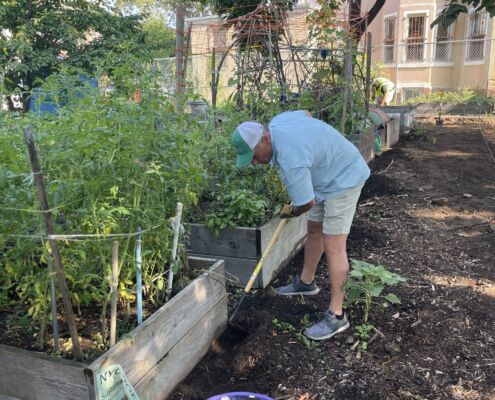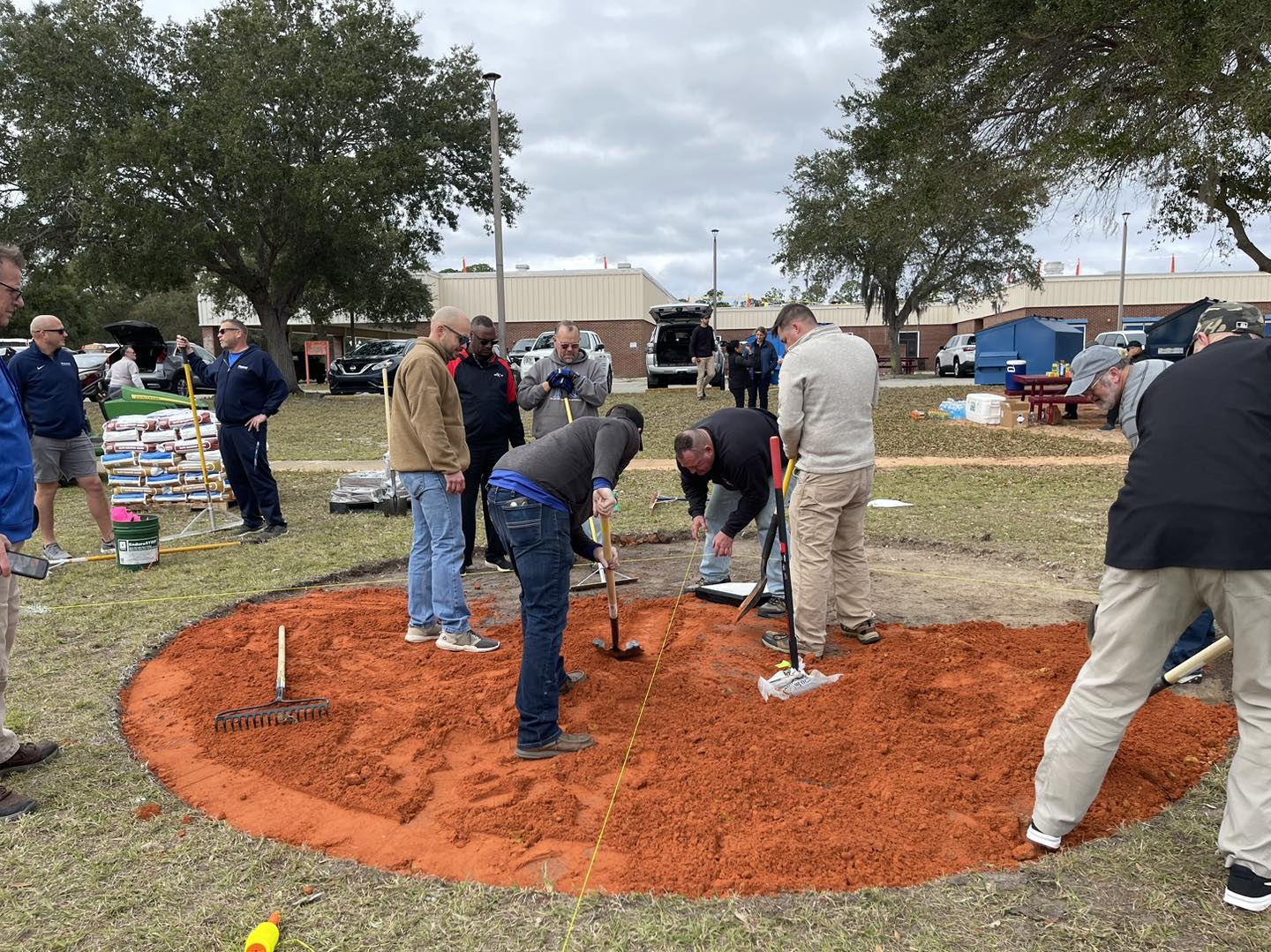Poppa and Momma Jones Historical Garden
Poppa and Momma Jones Historical Garden
337 Van Siclen Ave.
Brooklyn, New York
Poppa and Momma Jones Historical Garden
337 Van Siclen Ave.
Brooklyn, New York
Photo/Video Credits: Project EverGreen, Christian Hernandez, Luke Truetken and New York City Green Thumb
July 2023
$40,000
$20,000
Garden Overview
Green spaces like Brooklyn’s Poppa and Momma Jones Historic Community Garden are critical to urban areas as they offset the heat island effect and provide the surrounding area with cleaner air through carbon sequestration.

The 6,623 sq. ft. green oasis has strong ties to this East New York community serving as a hub of connectivity for local residents. The garden was found by Poppa Jones, a retired Southerner, with extensive knowledge of gardening and an even bigger heart. Through his efforts growing vegetables, he and his wife fed thousands and befriended countless people in the community.
This was the eighth GreenCare for Communities project in New York City since 2014. Previous projects have included Liberty Island (2014), Neighbors of Vega Baja (2017), Clinton Community Garden (2018-19), Jackie Robinson Community Garden (2020), Carolina Community Garden (2020), Wishing Well Community Garden (2021) and Bradhurst Garden (2022).
Why Are Green Spaces Important to New York City
Green spaces are important to New York City residents for several reasons:
Environmental Benefits: Green spaces help to mitigate the urban heat island effect, reduce air pollution, and provide habitats for wildlife. They also help to reduce storm water runoff and prevent flooding.
Health Benefits: Access to green spaces has been shown to improve mental health, reduce stress, and promote physical activity. In a city like New York, where many residents live in areas with limited access to fresh food and safe outdoor spaces, green spaces can provide important opportunities for exercise and recreation.
Social Benefits: Green spaces provide a gathering place for community events and activities, fostering a sense of community and social cohesion. They also provide opportunities for volunteerism and community engagement.
Economic Benefits: Green spaces can increase property values and attract businesses, tourists, and new residents to the area. This can lead to increased economic activity and job creation.
In New York City, the availability of green spaces varies widely by neighborhood, with some areas having more parks and greenways than others. As a result, there has been a push to increase access to green spaces in underserved communities, through initiatives such as the Mayor’s Action Plan for Neighborhood Parks and the Parks Without Borders program. These initiatives aim to improve the quality of life for all New York City residents by increasing access to green spaces and promoting a healthier and more sustainable city.
Project EverGreen’s Impact
Parks, lawns, landscapes and maintained green spaces help to mitigate temperature increases in communities and significantly reduce energy use and cooling costs. Project EverGreen’s GreenCare for Communities initiative has made a significant impact. Since 2008, Project EverGreen and its partners have renovated community parks and public green spaces totaling more than 200 million square feet of living green space.
Through its nationwide base of professional volunteers, Project EverGreen has connected people, plants, and their communities to maximize the health of grass, plants, and trees, which in turn sequesters carbon and cleans the air. The initiative supports healthy green spaces in neighborhoods and cities, enabling maintained green spaces to function as the lungs of the city and offsetting the negative effects of a warming environment.
Project Scope

 Palm Terrace Elementary School – Daytona Beach – 2024
Palm Terrace Elementary School – Daytona Beach – 2024